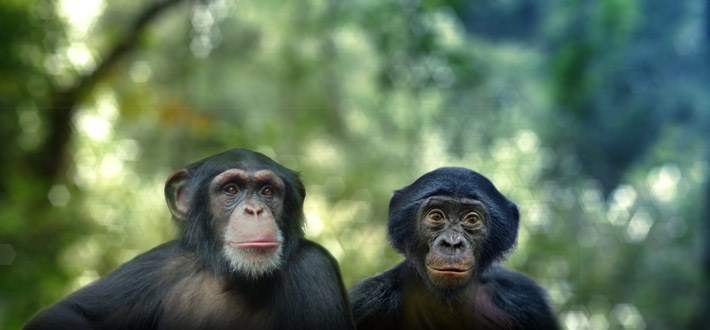
About 1.5 million years ago, a large group of chimps were separated by a growing Congo river. The south side of the river had more abundant food sources than the north. The chimps on the abundant side are known today as bonobos, and they're very mellow. The women run things. They're neighborly, sharing territory with other bonobo groups. When tensions rise, they have sex instead of fighting. Chimps on the side with less abundance are known today as chimpanzees, and they're much more aggressive. They're very territorial, patrolling their borders in gangs, merciless in fighting, hierarchical and patriarchal. These behavior patterns map to their environments. In times and places of scarcity, competition is more intense. Strength and force become the rule, escalating violence. In abundance, a flat, cooperative society works fine. Violence within our communities is not our default. It's turbulence that emerges when people can't meet their needs. To maximize choice and minimize drama, work for community-wide abundance.